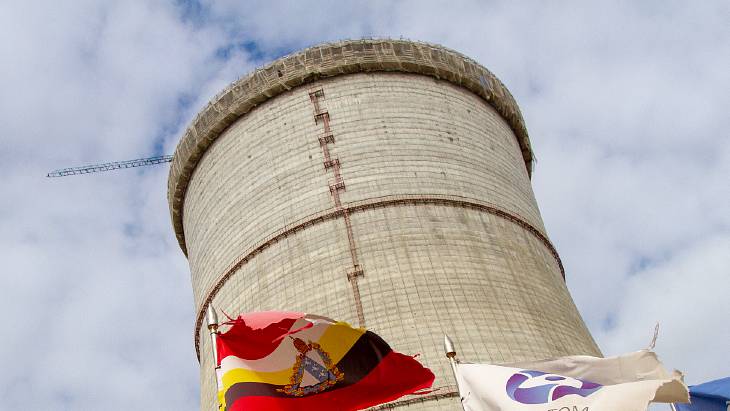The cooling tower, which is designed to have a service life of 100 years, rises 8 metres higher than the previous tallest one in Russia, at Novovoronezh nuclear power plant.
Cooling towers in nuclear power plants are used, as their name suggests, to cool water which has heated up during its circulation through cooling systems in a power plant.
Andrey Osharin, first deputy director for construction of new units at the plant, said the project "takes into account the experience of operating cooling towers of other nuclear power plants … the heat removal capacity of the Kursk II cooling tower has been increased by about 22%. In order to increase power, they increased the height. The design of 179 metres will provide the stable operation of the power unit without reducing energy production, even in the hottest summer period. The evaporative cooling tower of the replacement station is capable of cooling up to 160,000 cubic metres of water per hour".
A special hydrophobic concrete was used that repels water and meets the required waterproofing standards. The 14,000 cubic metres of concrete mix used was said by Rosenergoatom to be about the same as would be required for construction of three 16-storey two-entrance residential buildings. A crane capable of gradually increasing its height to 200 metres was used during the process.
Oleg Shperle, project director for the construction of Kursk, said that now that the concreting process had been completed the challenge is to install precast concrete inside the cooling tower under the water traps, before the cooling tower is ready for operation.
He added that innovations and lessons learned during the construction had already been shared "with Indian partners who are building cooling towers at the Rooppur nuclear power plant".





_47120.jpg)
_23621.jpg)

_63865.jpg)





